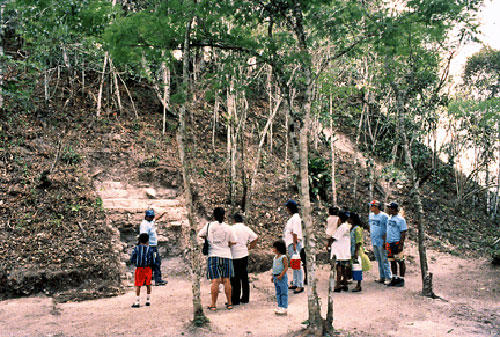El Pilar Archaeological Reserve
1996 World Monuments Watch
Weather, plant encroachment, and looting of antiquities threaten El Pilar, the largest ancient Maya city in the Belize River area. Recent excavations have revealed some twenty-five plazas, intricate palaces, and temples rising as high as the forest cover. Rare examples of corbel vaults, excavated intact in 1993, were assessed as being in partial ruin after only two years. Trenches made by looters have exposed plastered masonry rooms, lofty vaults, and monumental stairways. El Pilar straddles the border between Belize and Guatemala, and a bilateral peace park has been proposed. A multinational program to preserve and interpret the site, aimed at illustrating ancient Maya life and its relationship to nature, will be a valuable demonstration project and resource for the economies of local villages on both sides of the border. Funding cutbacks, however, threaten not only to halt documentation and conservation work but to leave areas of the site unguarded and prey to looters.
Since the Watch
Following the 1996 Watch, the governments of Belize and Guatemala agreed to joint research, conservation, and presentation of the ancient Maya site. Bilateral protective regulations have been strengthened, and both countries developed site management plans for El Pilar by 2006. Fieldwork undertaken by archaeologists from the MesoAmerican Research Center of the University of California, Santa Barbara has continued to this day. The project focuses on researching everyday Maya life and has emphasized the site's relationship with the rainforest. In 2014, the MesoAmerican Research Center processed LiDAR, or Light Detection and Ranging imagery, which revealed a citadel and a sunken plaza connecting the causeways. November 2014

